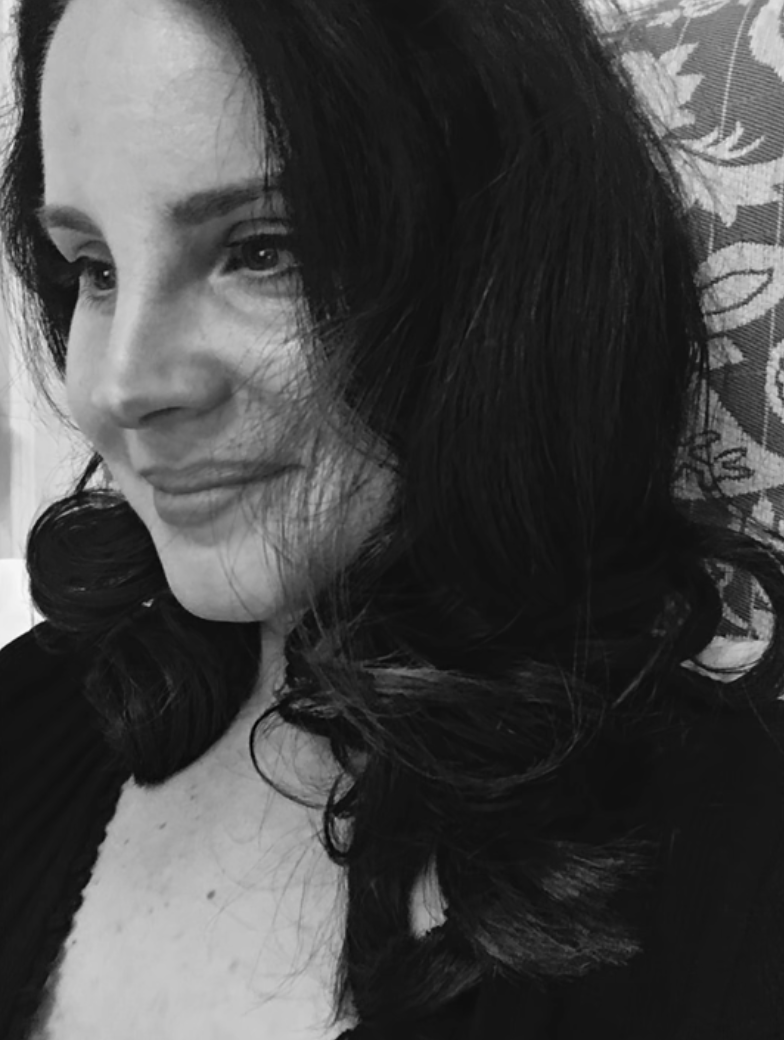An impish grin characterizes Lana Del Rey’s expression on the more than somewhat lo-fi album cover for her latest single, “Hope Is A Dangerous Thing For A Woman Like Me–But I Have It.” Formerly labeled with the much more succinct title of “Sylvia Plath,” the song is a rumination on topics that have been a favorite since the Honeymoon era. As her third record, it already established a well-formed ennui with the banality of fame’s so-called trappings. But it is just that: a trap. Like being forever stuck in a gilded cage as people snap your photos even when you briefly give them the benefit of the doubt (specifically like that exact scene in Madonna’s “Drowned World/Substitute For Love” video).
With tracks like “High By the Beach” and “God Knows I Tried,” the resignation Del Rey expresses toward her ascent into the public eye as a result of achieving a lifelong ambition to be a singer is, as Sylvia Plath was all too familiar with, tragically poetic. In the video for “High By the Beach,” having a beautiful beachfront home can’t seem to compensate for a paparazzo in a helicopter buzzing at her like an insidious fly. This notion of her once only refuge from interruption and chaos being the beach also manifests in the third track from 2017’s Lust for Life, “13 Beaches,” during which Del Rey discusses how it took that many for her to “find one empty.” To find the peace in nature that once came so effortlessly when she was anonymous, when “spilling [her] guts with the Bowery bums [was] the only love [she’d] ever known”–as she so elegiacally puts it.
What some might perceive as the almost obnoxious in length title of this third single from Norman Fucking Rockwell is, in fact, Del Rey showcasing that, at the very least, when you’ve reached her level of fame, you can do pretty much whatever the fuck you want, at least artistically. For when it comes to the Del Rey fanbase, it seems as though the more “over the top” she becomes in sorrow or politicism, the more Christ-like she becomes. And, speaking of religion, there is no shortage of allusions to the Catholicism that formed Lizzy Grant’s early years, a time when she seemed to lose her faith in God to the spirit in the bottles. Seeming to flashback or draw from that period in her life when she was living on Long Island and working as a waitress after boarding school, Del Rey croons about the stage, “which I also call home, when I’m not/Servin’ up God in a burnt coffee pot for the triad/Hello, it’s the most famous woman you know on the iPad/Calling from beyond the grave, I just wanna say, ‘Hi, Dad.'” That Plath, too, expressed no shortage of Daddy issues is also of particular resonance in this line, in which Del Rey appears to be, for the first time, getting overtly frank about a period in her life she may have previously attempted to glamorize on songs like “This Is What Makes Us Girls.”
And there is an emotional candor to this cut unlike any we’ve ever experienced before. Less stylized, more psychoanalyzed, if you will. From the opening line, when Del Rey describes, “I was reading Slim Aarons and I got to thinking that I thought/Maybe I’d get less stressed if I was tested less like/All of these debutantes,” she makes the comparison between herself and a subject that has long punctuated her lyrics: the pretty girl forced to smile because she’s beautiful. Because to do otherwise would be a crime against humanity. That Slim Aarons was a photographer known for his images of socialites lounging poolside also conjures the dichotomous paparazzi photo of Del Rey swimming in the ocean in jeans and a t-shirt while shooting the 2014 video for “West Coast.”

Despite constantly painting a portrait of glamor and the baroque in her songs, it is evident that Del Rey does not feel this is the life she is truly leading. She balks that because she smiled for once on a record’s cover (Lust for Life), “They write that I’m happy, they know that I’m not/But at best, you can see I’m not sad.” The assumption that her existence is the one projected in her music and videos (and occasional tabloid photos of her jaunts in Italy) is kiboshed as Del Rey asserts that, unlike the debutantes in the Slim Aarons photos, “Smiling for miles in pink dresses and high heels on white yachts/But I’m not, baby, I’m not/No, I’m not that, I’m not.”
And when she says that “hope is a dangerous thing for a woman like me,” “a woman with my past,” Del Rey is perhaps speaking on the universal feeling (whether anonymous peon or international star), that even in the face of all our experience to the contrary, we still can’t help believing in something good on the horizon.






















